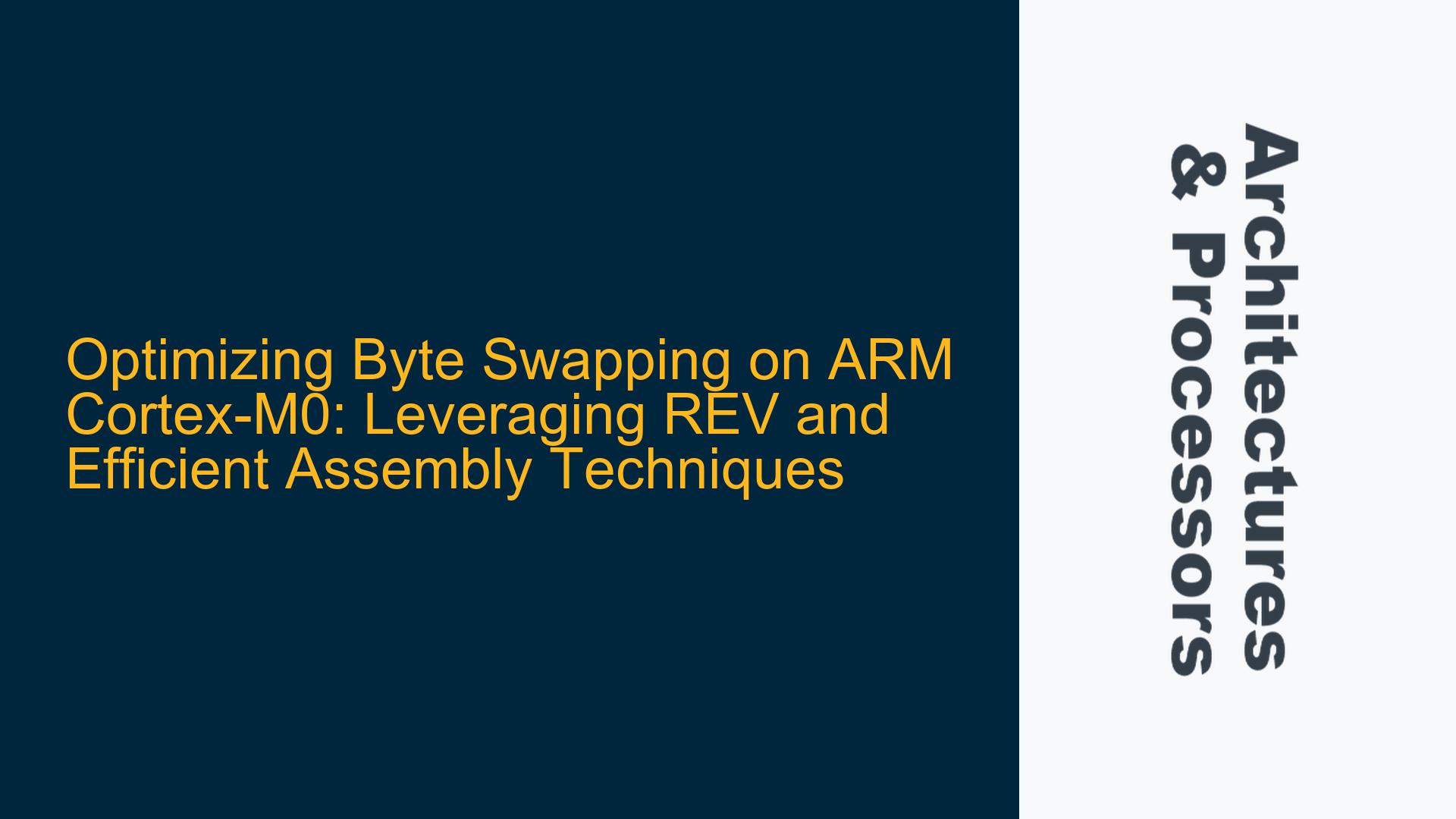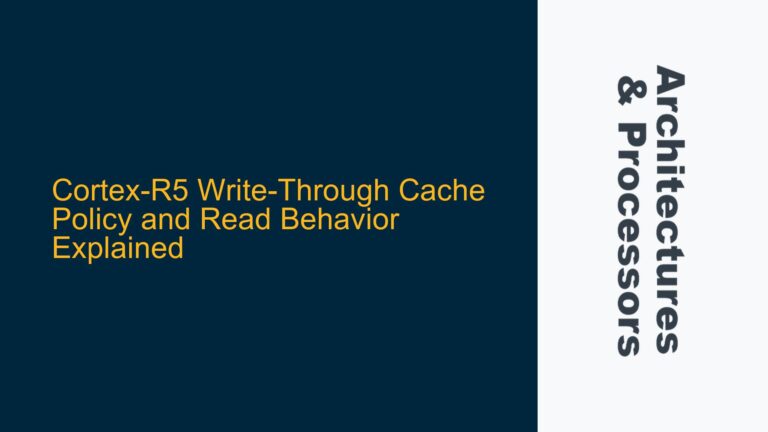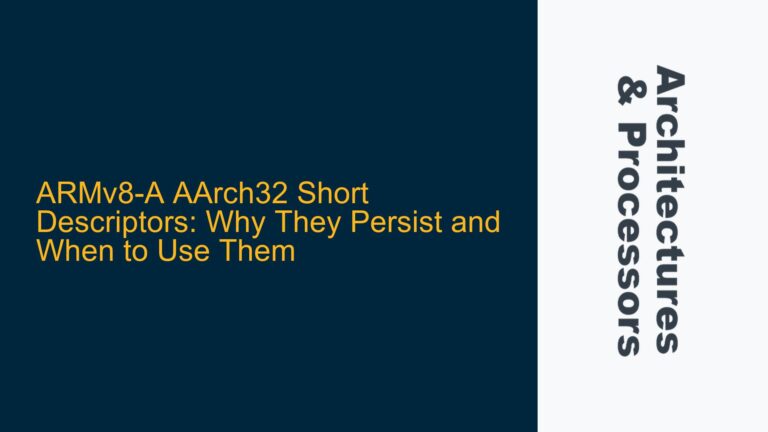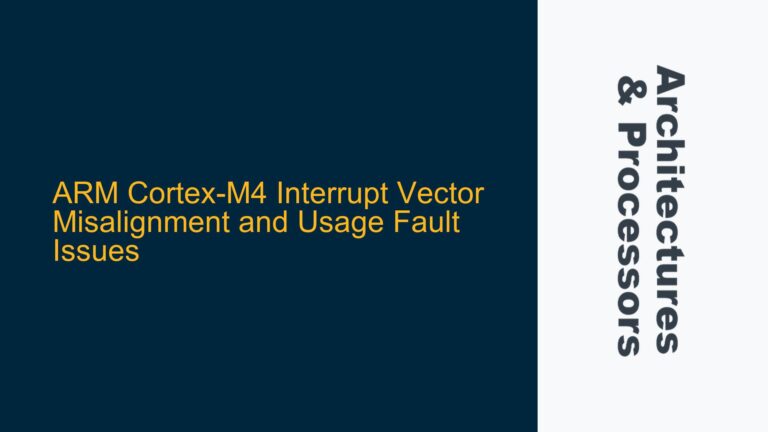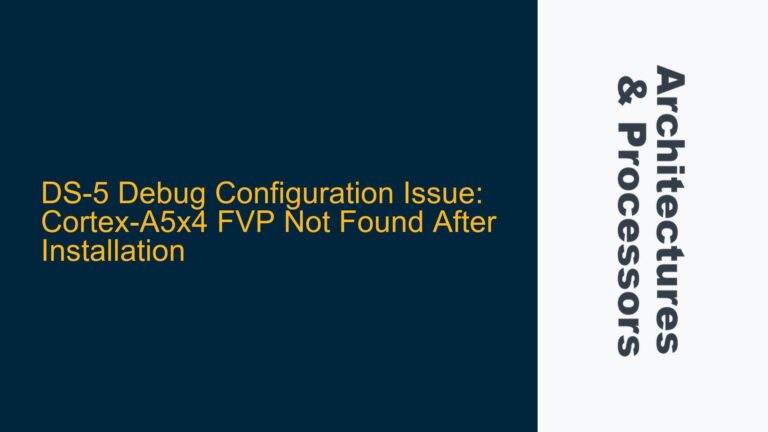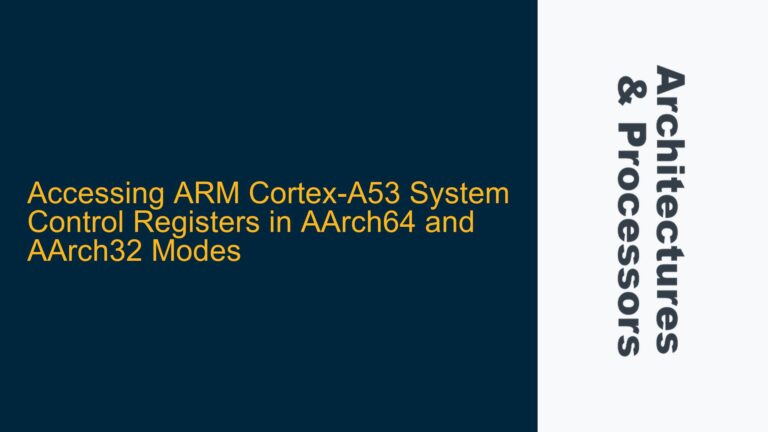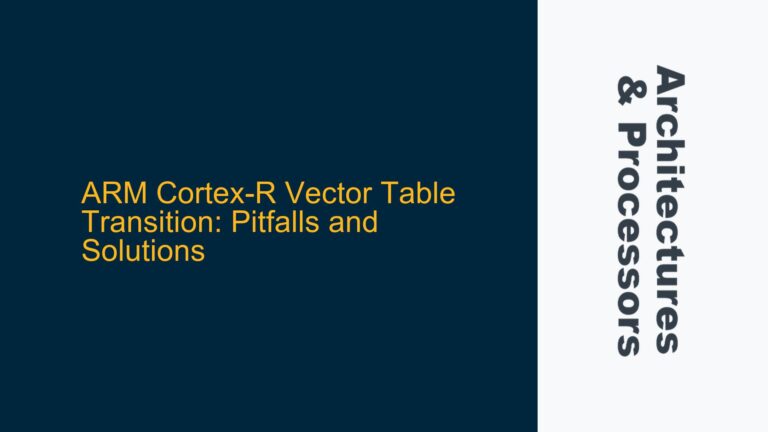ARM Cortex-M0 Byte Swapping: Understanding the Problem and Initial Implementation
The ARM Cortex-M0 is a highly efficient, low-power processor designed for embedded systems, and its Thumb instruction set is optimized for compact code size and simplicity. One common task in embedded systems is manipulating data at the byte level, such as swapping the middle two bytes of a 32-bit word. This operation is often required in protocols, data formatting, or when interfacing with peripherals that use specific byte ordering.
The initial implementation provided in the discussion uses a straightforward but verbose approach to swap the middle two bytes of a 32-bit word. The code loads the original value into a register, masks out the middle bytes, shifts them into their new positions, and then combines the results. While this approach works, it is not optimal in terms of instruction count or execution time. The original implementation uses 10 instructions, which can be reduced significantly by leveraging specific ARM instructions designed for such operations.
The key challenge here is to minimize the number of instructions while ensuring the operation is correct and efficient. The Cortex-M0’s limited instruction set makes this task particularly interesting, as it lacks some of the more advanced instructions available in higher-end ARM cores. However, the Thumb instruction set includes powerful instructions like REV (Reverse Bytes) and REV16 (Reverse Bytes in Halfwords) that can be used to optimize byte manipulation tasks.
Inefficient Masking and Shifting: Identifying the Bottlenecks
The initial implementation suffers from several inefficiencies. First, it uses multiple load instructions to set up masks and the original value. While loading constants is necessary, the way these constants are used can be optimized. For example, the masks 0x00FF0000 and 0x0000FF00 are used to isolate the middle bytes, but these masks can be combined into a single constant 0x00FFFF00, reducing the number of load instructions.
Second, the implementation uses separate shift operations to move the bytes into their new positions. Shifting is a common operation in assembly, but it can be costly in terms of cycles, especially when multiple shifts are required. The Cortex-M0’s instruction set includes bitwise operations like AND, OR, and EOR (Exclusive OR) that can be used to manipulate data more efficiently.
Finally, the initial implementation does not take advantage of the REV and REV16 instructions, which are specifically designed for byte-level manipulation. These instructions reverse the byte order of a word or halfword, respectively, and can be used to simplify the byte swapping process. By combining these instructions with bitwise operations, the number of instructions can be significantly reduced.
Optimizing Byte Swapping with REV and Bitwise Operations: A Step-by-Step Guide
To optimize the byte swapping operation, we can leverage the REV instruction and combine it with bitwise operations. The REV instruction reverses the byte order of a 32-bit word, which can be used to simplify the process of swapping the middle two bytes. Here’s how the optimized implementation works:
-
Load the Original Value and Mask: The first step is to load the original 32-bit value and a combined mask into registers. The mask
0x00FFFF00is used to isolate the middle two bytes.LDR R0, =0xAABBCCDD // Load the original value LDR R1, =0x00FFFF00 // Load the combined mask -
Reverse the Byte Order: The
REVinstruction is used to reverse the byte order of the original value. This operation transforms0xAABBCCDDinto0xDDCCBBAA.REV R2, R0 // R2 = 0xDDCCBBAA -
Apply the Mask to the Reversed Value: The reversed value is then masked to isolate the middle two bytes. The mask
0x00FFFF00is applied to0xDDCCBBAA, resulting in0x00CCBB00.ANDS R2, R1 // R2 = 0x00CCBB00 -
Clear the Middle Bytes in the Original Value: The original value is masked to clear the middle two bytes. The mask
0x00FFFF00is used to clear the middle bytes, resulting in0xAA0000DD.BICS R0, R1 // R0 = 0xAA0000DD -
Combine the Results: Finally, the masked reversed value is combined with the original value using the
ORRinstruction. This operation combines0xAA0000DDand0x00CCBB00to produce the final result0xAACCBBDD.ORRS R0, R2 // R0 = 0xAACCBBDD
This optimized implementation reduces the instruction count from 10 to 6, making it significantly more efficient. The use of the REV instruction simplifies the byte swapping process, and the combined mask reduces the number of load instructions required.
Further Optimization: Avoiding Literal Loading and Using REV16
While the above implementation is efficient, it can be further optimized by avoiding the use of literal loading and leveraging the REV16 instruction. The REV16 instruction reverses the byte order within each halfword of a 32-bit word, which can be used to simplify the byte swapping process even further.
Here’s an alternative implementation that avoids literal loading and uses REV16:
-
Load the Original Value: The original value is loaded into a register.
LDR R0, =0xAABBCCDD // Load the original value -
Shift and Mask the Original Value: The original value is shifted and masked to isolate the middle two bytes. The
LSL(Logical Shift Left) andLSR(Logical Shift Right) instructions are used to position the bytes correctly.LSLS R1, R0, #8 // R1 = 0xBBCCDD00 LSRS R1, R1, #16 // R1 = 0x0000BBCC LSLS R1, R1, #8 // R1 = 0x00BBCC00 -
Clear the Middle Bytes in the Original Value: The original value is masked to clear the middle two bytes.
EORS R0, R1 // R0 = 0xAA0000DD -
Reverse the Middle Bytes: The
REV16instruction is used to reverse the byte order within the middle two bytes. This operation transforms0x00BBCC00into0x00CCBB00.REV16 R1, R1 // R1 = 0x00CCBB00 -
Combine the Results: The reversed middle bytes are combined with the original value using the
ORRinstruction.ORRS R0, R1 // R0 = 0xAACCBBDD
This implementation avoids the use of literal loading and reduces the number of instructions to 7. The REV16 instruction is used to simplify the byte swapping process, and the use of bitwise operations ensures that the operation is efficient.
Conclusion: Best Practices for Byte Swapping on ARM Cortex-M0
Byte swapping is a common task in embedded systems, and optimizing this operation can lead to significant performance improvements. The ARM Cortex-M0’s Thumb instruction set includes powerful instructions like REV and REV16 that can be used to simplify and optimize byte manipulation tasks. By combining these instructions with bitwise operations, the number of instructions required for byte swapping can be significantly reduced.
When optimizing byte swapping on the Cortex-M0, it is important to consider the following best practices:
- Use Combined Masks: Combining masks into a single constant can reduce the number of load instructions required.
- Leverage REV and REV16: These instructions are specifically designed for byte-level manipulation and can simplify the byte swapping process.
- Avoid Literal Loading: Where possible, avoid using literal loading to reduce the number of instructions and improve efficiency.
- Use Bitwise Operations: Bitwise operations like
AND,OR, andEORcan be used to manipulate data more efficiently than shifting and masking.
By following these best practices, developers can write efficient and compact code for byte swapping on the ARM Cortex-M0, ensuring optimal performance in embedded systems.
